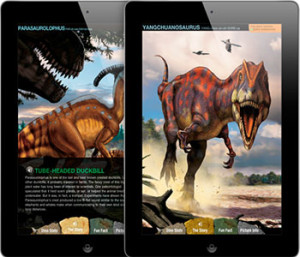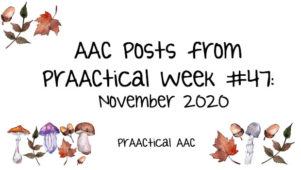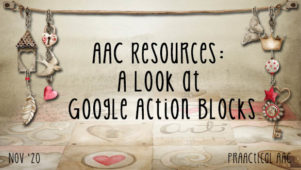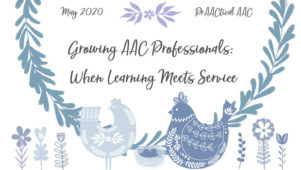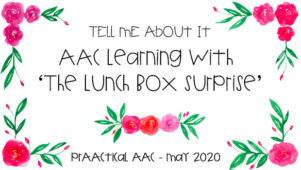AAC & Dinosaur Apps for Literacy and Language
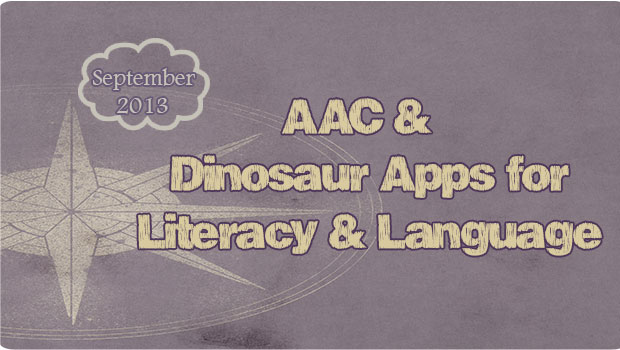
We have students of all ages who love dinosaurs. From young children to the teenager or adult we can use the theme of dinosaurs when teaching AAC, language and literacy. You can do a theme of fun dinosaurs all the way to paleontology and archeology. Dinosaurs as a theme can support goals for core & fringe vocabulary, narratives, reading, and writing. Many students will do more and work harder if there is a high interest theme. Here are some apps for those dinosaur loving students.
Dinosaurs Books
BooksHow to Hide A Dinosaur– children, iPad, fun book
Dinoboy Adventures– children, iPad & iPhone +, interactive book where you can make choices to modify the story
Tiny Time Machine- Dinosaurs– children, iPad & iPhone +, a travel adventure mystery
Oh Can You Say Di -NO -Saur Dr. Seuss Cat In the Hat– children, iPad & iphone + , fun book
Dinosaur Book HD: iDinobook– all ages, iPad, fact based book
Diana Dreams About Dinosaurs-children, iPad, fun book
Dinos Sleep children, iPad & iPhone +, sleep routine
Britannica Kids: Dinosaurs– any age, iPad & iPhone +, reading and games about dinosaurs
Sid Surga Saurus Surfing Dinosaur children, iPad, fun book & songs
Ansel and Clair- Cretaceous Dinosaurs– children, iPad, Dinosaur interactive fun curriculum
Dinosaur Vocabulary, Spelling, Writing, & Phonics
Dinosaur Dig for Toddlers HD– children, iPad & iPhone +, excavate dinosaur bones to find all the types of dinosaurs
Spellosaur– children, iPad & iPhone +, create your own spelling lists
Dinosaur Letters– children, iPad & iPhone +, learn to trace/write and sound out letters
Dinosaur Stickers Free– all ages, iPad & iPhone +, dinosaur stickers to stamp onto habitats/backgrounds
Piece Me Dinosaur– children, iPad & iPhone +, spelling in an artistic puzzle app
Dino ABC’s– children, iPad & iPhone +, spelling
All Aboard the Dinosaur Train– children, iPad & iPhone +, problem solving, vocabulary, single or double player mode
Filed under: PrAACtical Thinking
Tagged With: Apps, Dinosaurs, literacy, vocabulary
This post was written by Robin Parker
